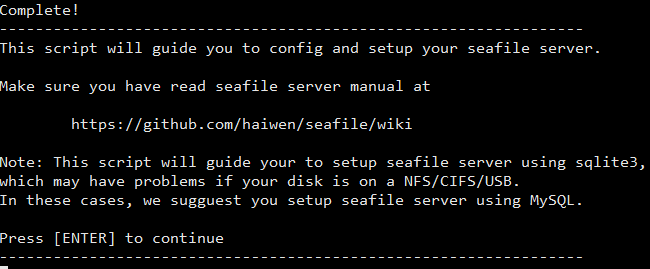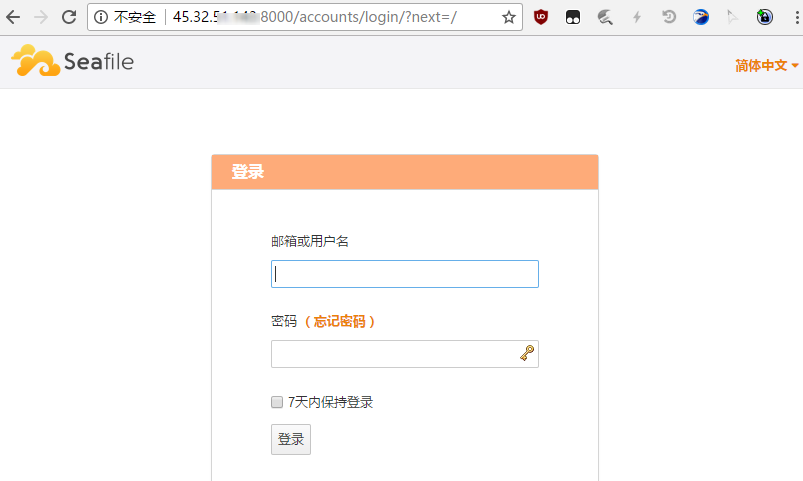One-click Installation of Seafile on CentOS 7 to Build Private Cloud Storage
Publish: 2017-06-12 | Modify: 2017-06-12
Seafile is an open source enterprise cloud disk, similar to Owncloud. Personally, I feel that Seafile is more stable and easy to set up. To facilitate this, xiaoz has written a one-click script to quickly set up your own private cloud.
Environment Requirements:
- CentOS 7 64-bit
- Python >= 2.7
- SqLite 3
Installation Steps:
Copy the following commands and enter them in order. If everything goes well, you will see the screenshots below. Follow the instructions in the screenshots.
yum -y install wget
wget https://raw.githubusercontent.com/helloxz/seafile/master/install_seafile.sh
chmod +x install_seafile.sh && ./install_seafile.shEnter number 1 to start the installation.

Press Enter when you see this message.

Enter the service name (e.g. mycloud).

Enter the public IP address of the server.

Press Enter four times.

Set the administrator email and password (the password will not be displayed, just press Enter after entering the password).
When you see the following interface, the installation is complete. Enter http//:IP:8000 to access the Seafile server. If you understand Chinese, the following operations should not be a problem. Seafile also provides clients for multiple platforms (see the end of the article).


Other Information:
Installation directory and services are as follows. If you need to configure more features or extensions, please visit the official documentation: Seafile Help Documentation
Installation Directory:
/home/MyCloud
Start Services:
/home/MyCloud/seafile-server/seafile.sh start
/home/MyCloud/seafile-server/seahub.sh start
Stop Services:
/home/MyCloud/seafile-server/seafile.sh stop
/home/MyCloud/seafile-server/seahub.sh stopSummary:
Seafile supports clients for all platforms and is very suitable for private cloud solutions. One VPS is enough to handle everything. I have also shared a one-click script for installing Resilio Sync in the article "CentOS One-Click Install Resilio Sync Script". If you are interested, you can give it a try.
Script Source Code: CentOS 7 One-Click Install Seafile Seafile Client Download: Seafile Client
Comments

xiaoz
I come from China and I am a freelancer. I specialize in Linux operations, PHP, Golang, and front-end development. I have developed open-source projects such as Zdir, ImgURL, CCAA, and OneNav.
Random article
- Is Watching Movies on Pico Neo 3 VR All-in-One Headset Fun?
- The Application Process for CITIC Bank Bai Tiao Co-branded Card (Credit Card)
- Hengchuang Technology May Super Sale, 25% off storewide
- Personal Payment Interface XorPay User Experience, Real-time Alipay Settlement
- ImgURL Image Hosting Updated to v1.2, Added URL Batch Upload
- Exploring the Future of Cloud Computing: Join Us at the 2024 Amazon Web Services China Summit in Shanghai
- Application for Tax Levy and Invoice Needs for Individual Businesses in Chengdu
- Get 40% off on RAKsmart VPS Series Products by completing the questionnaire
- Experience of Flashing Breed Firmware and Using Redmi Router AC2100
- Building a Visualized Scheduled Task with jiacrontab